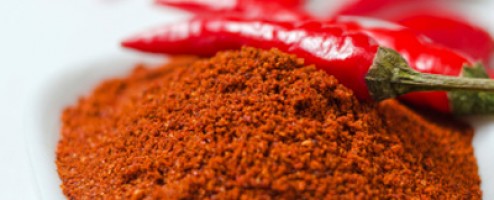
(www.agein.com article)
by Marni Andrews
Figuring out how to treat pain naturally may be somewhat new for scientists, but the method dates back thousands of years.
The first synthetic antibiotic drug, Prontosil, became available commercially in 1935, although the ancient Egyptians, Chinese, and Central American peoples all had the knowledge of using molds to treat infected wounds—their traditional means of how to treat pain naturally.
The first Aspirin, made from salicin in willow bark, was first bottled as a powder in 1899, but Hippocrates in ancient Greece is said to have known all about how to treat pain naturally with powder made from the bark and leaves of the willow tree.
While Prontosil and Advil both significantly impacted the management of pain and infection in the 20th century and onwards, it’s clear that there has been a long history of how to treat pain naturally using all-natural ingredients.
The body actually has its own natural pain reliever—chemicals called endorphins—that are produced in the brain, spinal cord, and other areas of the body. When the body is in pain, endorphins are released to diminish the perception of that pain, and to act as sedatives. Endorphins also play an active role in stress management, but the body cannot get addicted or dependent on them the way it can with drugs like morphine.
When talking about how to treat pain naturally, endorphins are a key component. You can encourage the release of more pain-relieving endorphins by doing physical activity that gets your blood pumping. “Runners high” isn’t just a myth—it can actually make you feel better physically and emotionally, the perfect answer to how to treat pain naturally.
There are also certain ingredients that work well in terms of how to treat pain naturally. Here are four natural pain remedies:
Capsaicin: This is what makes hot peppers spicy. Capsaicin is the answer for how to treat pain naturally because it desensitizes the intensity of pain signals. It is available as a powder, dietary supplement, and topical cream. Capsaicin provides moderate relief for cluster headaches, joint pain, skin conditions, and nervous system conditions, such as shingles. One study found topical capsaicin produced a 50% reduction in pain. Another study showed that neuropathy patients who used a high concentration (eight percent) patch once for 60 minutes experienced effective pain relief for up to 12 weeks, proving that capsaicin can be an effective solution for how to treat pain naturally.
Vitamin D: Every tissue and cell in our body has a receptor for vitamin D and a study of 22 clinical investigations showed that those with chronic back pain almost always had insufficient vitamin D levels. Another study at the University of Minnesota found that 93% of those with non-specific, unexplained pain were deficient in vitamin D. Clearly, increasing the body’s level of vitamin D is essential when discussing how to treat pain naturally.
Glucosamine and Chondroitin: Glucosamine is naturally present in shellfish and animal bones. Chondroitin is present in shark and bovine cartilage. They are both part of normal human connective tissues. Taken alone or together for mild to moderate osteoarthritis, they can offer pain relief equivalent to NSAIDs (non-steroidal anti-inflammatory drugs), making them an ideal alternative for how to treat pain naturally.
Turmeric: A component of curry powder, turmeric contains curcumin, which has traditionally been used for pain and wound healing. It eases inflammatory conditions such as rheumatoid arthritis and psoriasis. When looking for how to treat pain naturally with turmeric, try mixing the powdered spice with warm water or milk—it doesn’t taste the best but it works. You can also find it as a tablet supplement.
Whether you are facing cancer or heart disease, or dealing with depression, diabetes, high blood pressure, or arthritis-induced joint pain, having the knowledge of how to treat pain naturally is one of the most valuable things you can possess. While prescription drugs are proven to work, in non-life threatening circumstances, going natural for pain relief can be just as effective.
Sources:
Anand, P., et al., “Topical capsaicin for pain management: therapeutic potential and mechanisms of action of the new high-concentration capsaicin 8% patch,” British Journal of Anaesthesia 2011; 107: 490-502; doi: 10.1093/bja/aer260.Bright, J.J., “Curcumin and autoimmune disease,” Advances in Experimental Medicine and Biology 2007; 595: 425-451.
Leavitt, S.B., “Vitamin D – A Neglected ‘Analgesic’ for Chronic Musculoskeletal Pain,” Pain Treatment Topics web site; http://pain-topics.org/pdf/vitamind-report.pdf, last accessed June 4, 2013.
Mason, L. et al., “Systematic review of topical capsaicin for the treatment of chronic pain,” BMJ 2004; 328; doi: 10.1136/bmj.38042.506748.EE.
Plotnikoff, G.A., et al., “Prevalence of severe hypovitaminosis D in patients with persistent, non-specific musculoskeletal pain,” Mayo Clinic Proceedings 2003; 78: 1463-1470.






